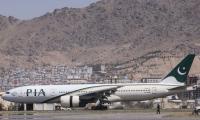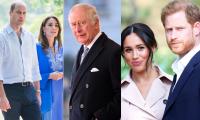It’s official now. Saudi Arabia is going to change the nature of the relationship between state, society and religion. The most conservative Muslim country in the world may never be the same again. What does that mean to Saudi Arabia and, more importantly, to Pakistan?
At a conference last week in Riyadh, the powerful Saudi Crown Prince Mohammed bin Salman created a stir by calling for the kingdom to “return to moderate Islam”. In a rhetorical statement, he said: “What happened in the last 30 years is not Saudi Arabia.
What happened in the region in the last 30 years is not the Middle East. After the Iranian revolution in 1979, people wanted to copy this model in different countries; one of them is Saudi Arabia. We didn’t know how to deal with it. And the problem spread all over the world. Now is the time to get rid of it.”
It is hard to disagree that the tensions between Saudi Arabia and Iran have played an important role in radicalising Muslims in the Middle East. Both countries, aspiring to lead the Muslim world, have copied each other in many ways. Vali Nasr claims in ‘The Shia Revival’ that Iranian Ayatollahs borrowed many ideas from Wahabi clerics of Saudi Arabia and founded a kind of regime that had no precedence in the Shia tradition. However, conflict and emulation between Iran and Saudi Arabia is only a part of the story.
The year 1979 is one of the most cataclysmic periods in Muslim history. On February 1, Ayatollah Khomeini returned to Iran after 15 years of exile, turning his country into a Shia theocracy. In November and December that year, insurgents took over Al-Masjid al-Haram in Mecca during the annual Hajj pilgrimage. At the end of December 1979, the Soviet Union sent thousands of troops into Afghanistan and assumed complete control of the country.
The first two events proved a serious challenge to the Saudi royal family while Afghanistan provided an opportunity to deal with them. The Iranian revolution replaced the government of an ally with a clergy vehemently opposed to the Saudi monarchy. The new Iranian government challenged Saudi pre-eminence in the Muslim world. It threatened to overthrow the Saudi monarchy and ‘export’ its revolution to other Muslim countries.
Most of the militants who had taken control of the Grand Mosque belonged to Saudi tribes. Some belonged to the families that had played a key role in the establishment of the kingdom. Their revolt posed a challenge to the legitimacy of the Saudi monarchy within the kingdom and its ability to guard holy places.
Internally, the Saudi royal family responded by further cementing its relationship with the Wahhabi religious establishment and granting it more power. It opened several new religious universities and handed over the education department to clerics. The Saudi clergy, with support from the government, also became active in proselytising its school of thought throughout the Muslim world. While the denomination followed by the Saudis was till then confined to the peninsula, it started spreading all over the Muslim world.
The close relationship between the Al Saud dynasty and the Wahhabi clergy goes back to the mid-18th century. It can be seen as an ancient arrangement in which a group of scholars ensured rule of law independent of the executive authority of the king. This arrangement offered legitimacy to the rule of the royal family in return for control over parts of the state. Reverting to moderate Islam in Saudi Arabia essentially means a new social contract between the Saudi royal family, the Wahhabi religious scholars and the people of the kingdom. It also means huge reform within Saudi society.
Saudi Arabia appears to have a young charismatic leader and a large population aspiring for such changes.
The kingdom also requires reforms in its institutional structure to avoid political decay. It looks like a classic case of disjunction between the state institutions, and a change in social reality. As Francis Fukuyama has noted: “When the surrounding environment changes and new challenges arise, there is often a disjunction between existing institutions and present needs. Those institutions are supported by legions of entrenched stakeholders who oppose any fundamental change.”
Saudi Arabia is facing the first generational transfer of power since 1953. In 64 years, which amounts to the depth of three generations, monarchy has been transferred from one brother to another. This may change with the next transfer of power. Saudi Arabia is effectively being ruled by an ambitious young crown prince who wants to mould the kingdom in his own ideas. As he stated in the conference, 70 percent of Saudi population is below the age of thirty and according to many observers, he is very popular amongst Saudi youth.
If the power of the ulema is reduced, the royal family will need new sources of legitimacy. In most countries of the world, monarchs have reduced their own authority by submitting to constitutions and handing executive authority to elected parliaments. This may not happen in Saudi Arabia any time soon. Therefore, the royal family will have to come up with new solutions.
Reform in Saudi Arabia is good news for Pakistan due to the close relationship between the two countries. Ziaul Haq opened up Pakistan to Saudi religious influence in an effort to legitimise his dictatorship and extract foreign aid. He keenly sought Saudi support in his effort to Islamise Pakistan. Saudi Arabia supported his government through policy guidelines and funded a huge network of madressahs affiliated to a small number of denominations in a country known for a diversity of Islamic sects. The institutional changes and legislation adopted during the Zia era have proved extremely resilient due to the influence of the religious lobby in the country.
The Saudi religious establishment has made a significant investment in Pakistan. Rather than anything else, Saudi influence has resulted in deep sectarians divisions within the country. Like everywhere else where Saudi funding reached, it disrupted the local Islamic traditions that had existed in Pakistan. This has been further amplified by millions of Pakistani workers working in Saudi Arabia who bring Saudi religiosity home with them.
While Saudi Arabia still needs to define what it means by moderate Islam, in South Asia we are very clear about it. It means respect for religious diversity and allowing all religious traditions to thrive side by side – without allowing anyone to sit on a seat of judgement.
The writer is an anthropologist and development professional.
Email: zaighamkhan@yahoo.com
Twitter: @zaighamkhan
The cases of Attabad Lake and Gwadar simply highlight the many tragedies that exist around the country
Reaffirming loyalty to democracy as a problem solver can be a good starting point
Unfortunately, Pakistani films and TV dramas have seldom ventured beyond domestic intrigues and love triangles
A woman walks past a building of the International Monetary Fund. — AFP/FileThe annual and spring meetings of the...
Late Benazir Bhutto's daughter Asifa Bhutto Zardari addresses the Christian community in Bihar Colony on January 23,...







